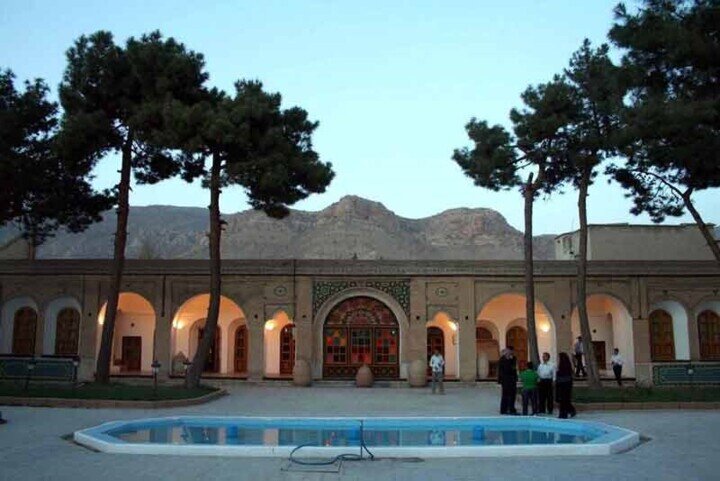Tehran – Iranian province is a land of endless treasures of culture and art, with a history of civilization of 11,000 years.
Three outstanding treasures in Ilam, including the Vari Castle, the Dalehar Archaeological Museum and the Agricultural Museum at Farahati Palace, are symbols of the glory of the civilization and customs of this ancient land, the IRNA reported.
Vari Castle
The Vari Castle Humanity Museum in Ilam dates back 120 years ago.
It was built in 1908 in the order of Gholamrezakhan Vali (Abouqaddareh) and on the historic mound of Chaqamirag, Ilam province.
The castle, which covers an area of 6487/17m, has a trapezoid façade. The castle has three entrances, with the tape measure made of octagonal bricks. The angel’s center south of the castle passes through several consecutive staircases and opens into the street.
The stairs indicate that the building level is higher than the area around the castle. There are two front yards at the edge of the door, providing light to the room. The front yard is decorated with several brick decorations and beautiful arches.
The ceilings of every room, made of mortar and bricks, are decorated with beautiful Roman style arches with colorful tiles. The castle has 22 rooms and six basements. The basement is estimated to have been used for rest in the spring and summer, and in the old days of prison.
The royal family of the building also features a large wooden window with unique plasterwork and flower patterns and a small stone pond in the middle.
Colorful glass is used for decorating wooden doors and windows. The main pattern of the wall belongs to photographs of the ruler and his spouse. At the edge of the building there are also two spaces leading to a garden and a shallow corridor to the tower.
The castle was transformed into an anthropological museum after several stages of renovation. The renovation process began in 2006. It is now a cultural place to express the customs and traditions of ILAM people, local clothing and lifestyle.
Historical occupations such as agriculture, felt-making, kilim weaving, jazim weaving, carpet weaving, not only live in black tents, but special customs such as Ilam weddings are on display. Moreover, the introduction of the state’s prominent personality is an attractive part of the museum.
The museum features a handicraft fair and food stalls for local souvenirs during Nowruz Holidays.
It is a symbol of the cultural and social identity of the people of ILAM.
Darrehshahr Archaeological Museum
The Darrehshahr Archaeological Museum is the first specialized archaeological museum to be launched in 2005 in the city of Darrehshahr.
The museum is a valuable collection of ancient items and historical artifacts, particularly related to the Sassanid period and the ancient cities of Darhashar.
Darrehshahr is considered to be the first city in the Sassanid era. It boasts much of the history of Ilam Province 9,000 years ago. It has transformed into a special destination for people interested in Iran’s history and civilization.
Darrehshahr plays an important role in introducing the history and civilization of the region, taking into account many monuments such as the ancient city of Seymare (Madak).
The head of Seyyed Mojtaba Farhadi, the Bureau of Cultural Heritage, Tourism and Handicrafts at Darrehshahr, said that the Darrehshahr Archaeological Museum has 220 ancient items related to different eras.
Ancient items, including artefacts identified during the 10 excavation seasons of Madaktu city, are related to the era of Sassanid and Achemenid.
He said that the Darrehshahr Archaeological Museum witnessed more than 500,000 visits between the Nowruz 1404 holiday and last year in Iran, indicating the importance and appeal of the cultural site to tourists both at home and abroad.
The museum also features ancient objects from other cities that showcase the glory of Ilam’s ancient civilization, the architecture of ancient cities, and the art of ancestors. They reveal many truths about the culture, religion and livelihoods of the local people.
Farahti Palace Agricultural Museum:
The Agricultural Museum at Farahti Palace, featuring four exhibition sections, presents traditional agricultural practices and tools used in the past.
The first section displays Arikeshi Hill stone tools from over 8,000 BC, including blades, microblades and flint scrapers.
The second section describes traditional agricultural procedures such as planting, tilting and harvesting using traditional methods of the last century.
The third section is dedicated to introducing herbal plants and their properties.
Also, in the fourth section, you can see documents related to old farmlands and traditional agricultural tools such as threshing sickles.
Based on archaeological data, ILAM is considered Iran’s oldest state. An important part of the Erama civilization in the Mesopotamian region of Iraq is the 11,000-year ancient history.
ILAM has 1,500 ancient, natural and tourist attractions, of which 774 are listed on the National Heritage List. Of them, 737 are spiritual attractions, six are natural attractions, and seven are related to sacred defence sites.
KD

